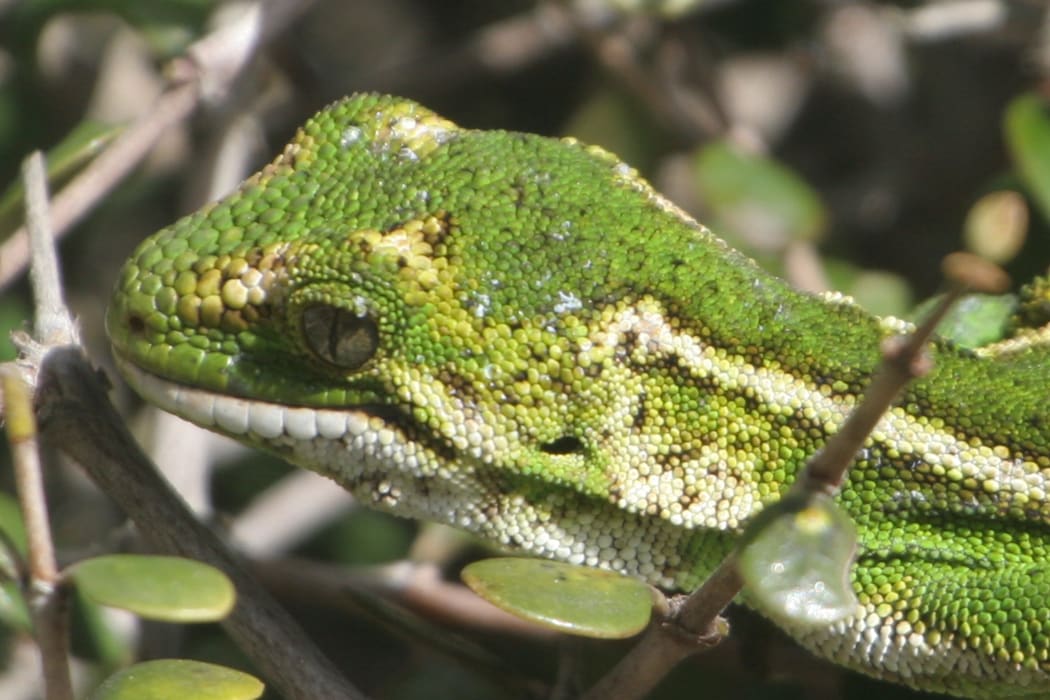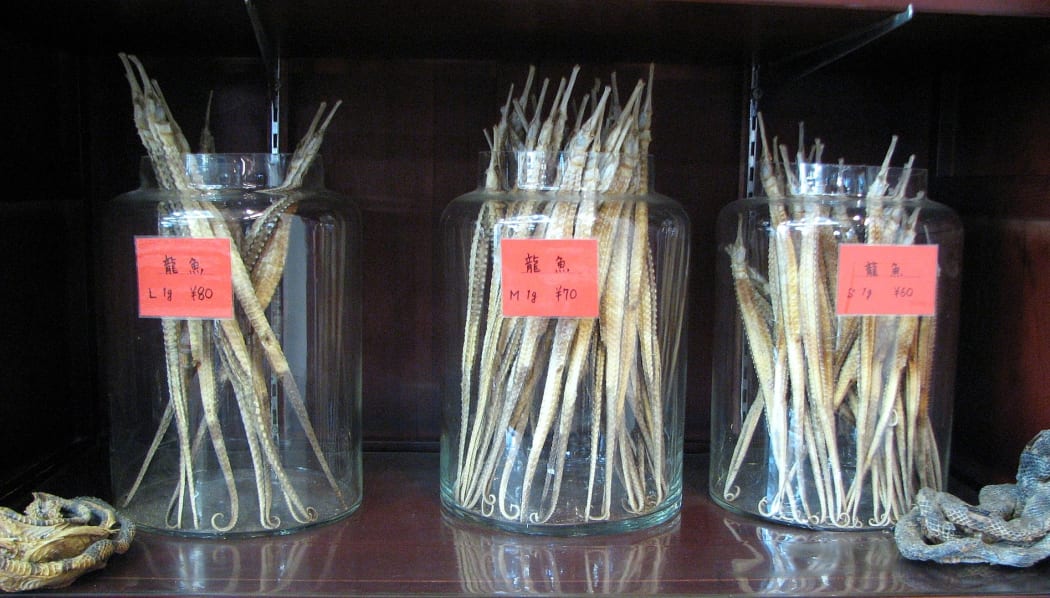
Jewelled gecko (moko kākāriki) Photo: Flickr / Eric de Leeuw / CC BY-NC-ND 2.0
Wildlife smugglers have been sent a stern message after an Auckland woman was convicted and fined for bringing Asiatic bear bile into the country.
It is the first time a person has been convicted for smuggling bear bile, but it’s one of thousands of cases of species seized at the border in New Zealand every year.
Today on The Detail Dylan Swain from the Department of Conservation talks about the battle against wildlife smuggling, both in and out of the country.
It is the third largest illegal trade behind weapons and narcotics, worth up to $23 billion globally - and it has an immense effect on the environment, Swain says.
Last week’s conviction in the Auckland District Court was important not only because it was the first of its kind but also because of the strong warning from Judge Charles Blackie.
He fined Litao Xu $7,500 for bringing in the bile, a traditional Chinese medicine used for a range of illnesses from high blood pressure to migraines.
Xu had been warned before. As early as 2007 she was warned for bringing in dozens of dried seahorses, and twice after that for bringing in specimens of endangered plants.

Seahorses for sale in a Japanese shop selling Chinese medicines Photo: Chris 73 / Wikimedia Commons
Because of the warnings her name was flagged when she came through the border in 2018, the court heard. Xu declared Chinese wine but not the tiny vials of bile, but a customs officer read the Chinese writing on the vials describing it as bear bile powder.
Judge Blackie described the fine as modest but pointed out that the legislation is more than 30 years old and in today’s terms it would be much more substantial. He also warned others who might consider importing bear bile into New Zealand that they may face jail time.
Swain says the message from Judge Blackie was important.
“We’re certainly seeing that in other areas of environmental crime. If we look at the increasing levels of fines around biosecurity offending, increasing levels of fines around RMA offending for dairy farmers dumping, for example, the courts do seem to be taking a much stronger line around environmental crimes as a whole and part of that is wildlife crime and the trade in endangered species across borders.”
In 2018 more than 6,300 people had species seized or surrendered at the border in New Zealand that are listed on CITES, the Convention on the Illegal Trade in Endangered Species. The Asiatic black bear is one of 36,000 species protected under the international agreement.
Up to 37,000 of the black bears live in the wild across northern China. They have been used for their bile in Chinese medicine for hundreds, perhaps thousands, of years.
About 50 years ago the first Asiatic black bear farms were established. The bile was extracted using catheters and the bears were kept alive to enable ongoing production. But people started to perceive wild bear bile as more potent than the farmed version, which led to increased demand for the wild caught bears.
“There is evidence that bears rescued from these captive farms have snare trap marks or might have paws missing where they’ve actually been caught in the wild and brought into these captive facilities,” says Swain.
His job as DOC’s principal compliance officer is to catch the smugglers. He works closely with a number of agencies including Customs and the Ministry for Primary Industries to track them down.
In today’s podcast he tells Sharon Brettkelly about how that happens – and talks about the prized New Zealand reptile that has passionate collectors breaking the law.


